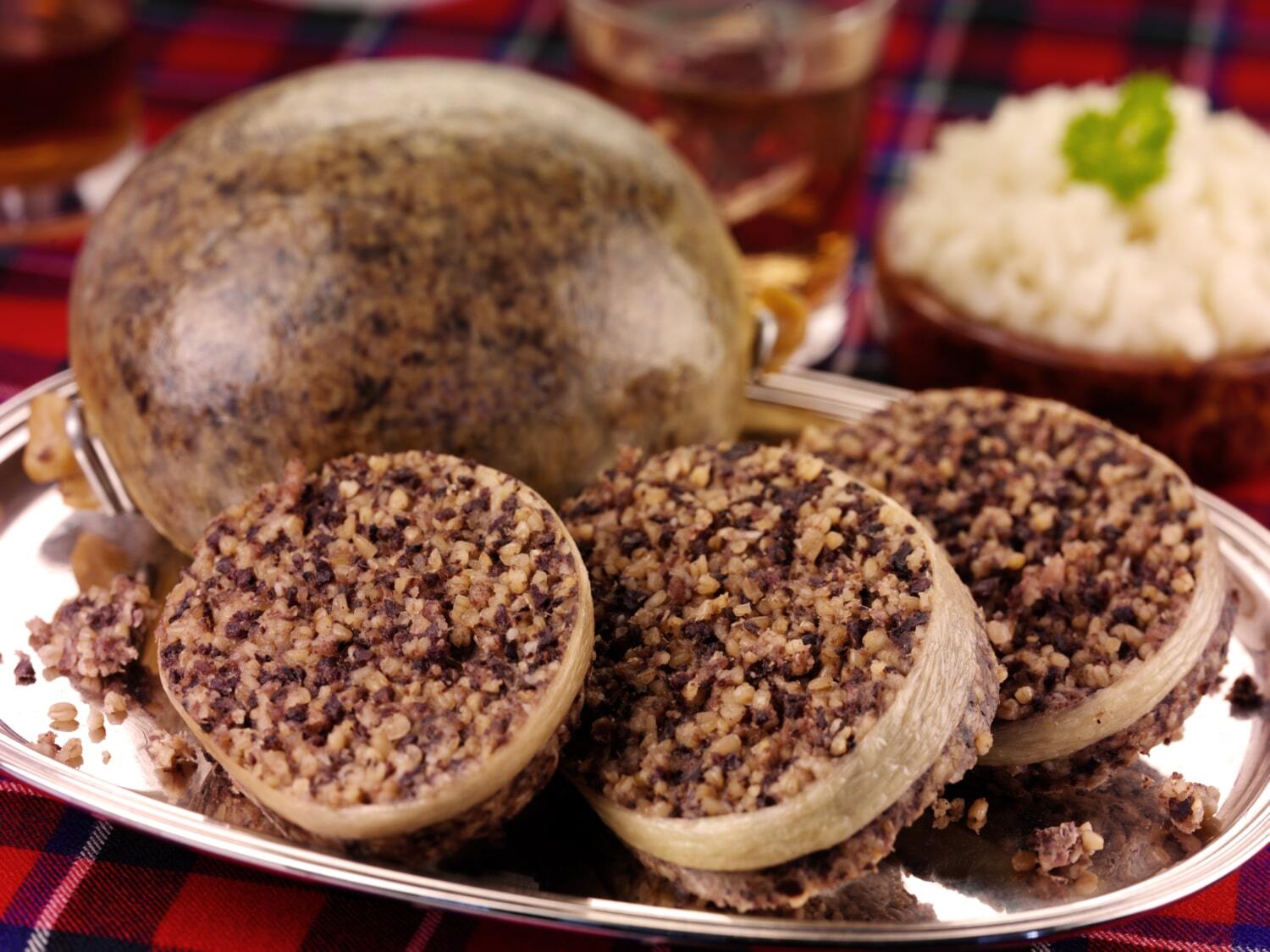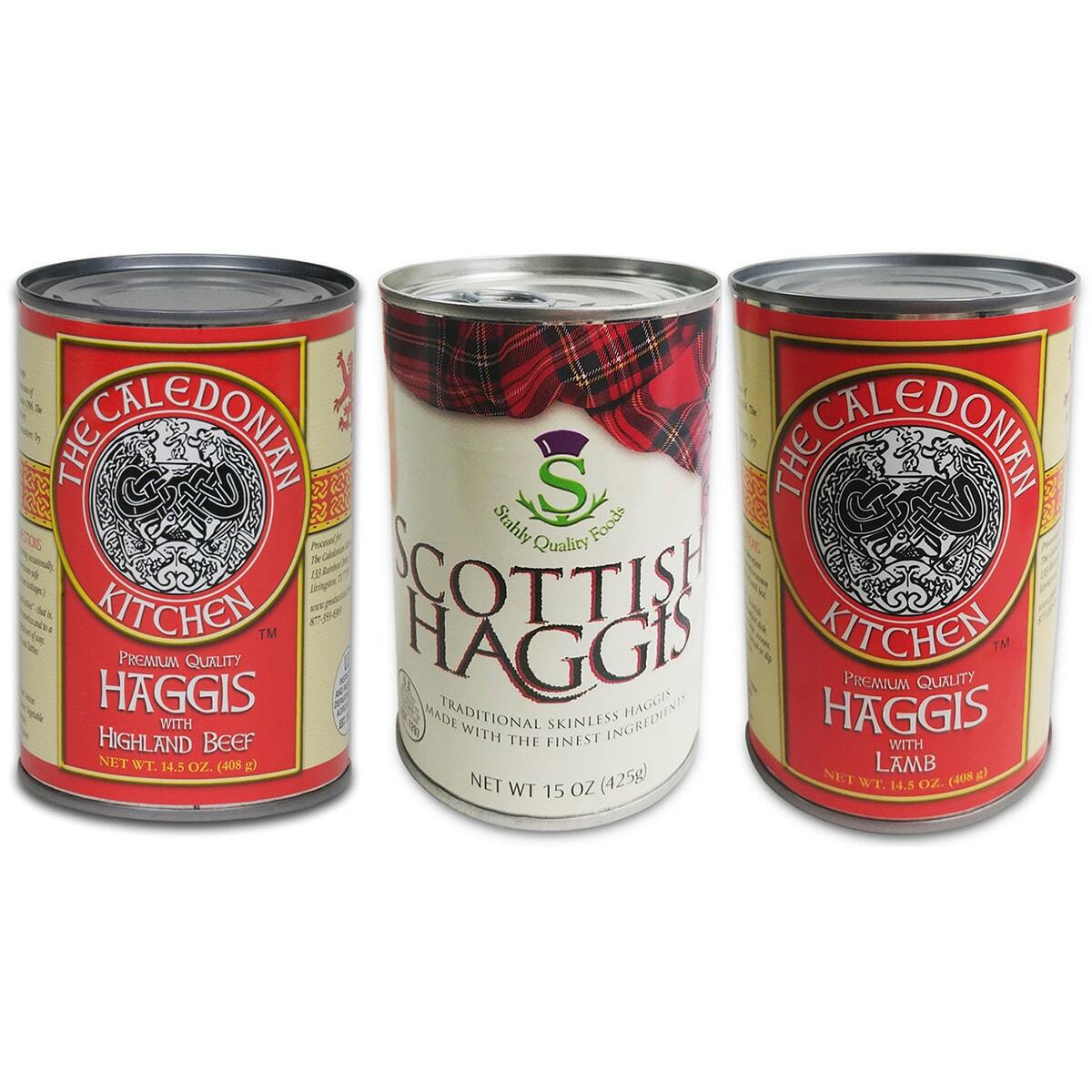Haggis: A True Scottish Delicacy
Posted by The Celtic Croft on Dec 30th 2020
When the word “haggis” is spoken anywhere but Scotland, it’s most likely to be met with a sneer, a gag, a general “yuck” sort of sound. These other than complimentary sounds will likely occur by folks who have never even partaken in the dish.
If this is not your reaction when discussing haggis, you are likely from Scotland. Scotland is where this national dish is revered rather than loathed. Whether this recipe piques your interest through your tastebuds or taste for historical knowledge, you will find it very satisfying! Keep reading to learn more about this traditional fare.
At The Celtic Croft, we carry several haggis offerings (there is even a recipe for those adventurous enough!) for those of a strong Scottish will and stomach.
Again, what is a “haggis”?

Americans view pudding with very different connotations than those native to the British Isles.
By Scottish definition, haggis is a type of pudding. This dish is a mixture of many things. Lungs, liver, heart, suet (often of beef or mutton), a grain such as oatmeal, spices, and veggies—all stuffed into a casing of sheep’s stomach and boiled.
We can imagine the looks on your faces. But, if you have the opportunity to try, you really should, just like your mother taught you!
Haggis is the national dish of Scotland—yes, many nations have a national food and beverage.
To score extra points in trivia, you may have guessed that whiskey is Scotland’s national drink. As it turns out, however, haggis may not have originated in Scotland at all.
Haggis: A History

There are loads of conjectures on haggis’ origin story. We are ultimately left to wonder where this delicacy came from but have several plausible ideas.
- Vikings CAN share: one possible beginning of haggis is that Vikings, in their travels around Europe, introduced a haggis version to the British Isles folks. Haggis’ root word “hag” may find some support in this theory.
- Auld Alliance of haggis: the French also have a word of similar meaning to the root “hag” (to chop) in their vocabulary. As the relationship between the two countries has always been very good, it’s not beyond the realm of imaginings that France gave this recipe card to their friends around the fourteenth century.
- English roots?: a definite non-favorite origin story is that this delicacy originated in a cookbook in the seventeenth century—an English cookbook. But then, a dish bearing resemblance was featured in ancient Roman writings as well.
The world may never know where this recipe was born. In truth, it may be a combination as dishes of its like are found all over Europe from many different periods throughout history.
What about haggis in more modern times?

While there is disparagement about the history of haggis, there is some agreement regarding it today. Historians and cooks alike do agree on several items related to its history and relationship to Scotland.
This type of dish was common to those who went on a hunt. It was good food to go and uses nearly every part of the animal. You can boil haggis inside the animal as the hide is curing. And, it is quick to make, as it is important to use sensitive innards lest they go bad quickly.
As haggis was easy to make since they were already butchering for the meat anyway, these leftover pieces that the great chieftain may not want in their meals often went to the lower class folk. Haggis went mostly unnoticed for a long time because of its lower-class roots. It also may be why the history of the dish is so spotty.
Enter Robert Burns. As the 1800s quickly approached, the poet Robert Burns wrote what may become one of his most famous works, an ode called “Address to Haggis.” This dish was relatively unknown until this point, but the love and admiration Burns exuded in this poem brought it to the forefront.
Burns was a popular guy, and so was his poem about haggis. So much so that he is celebrated on his birthday every year on January 25.
A dish without a history became the centerpiece of this feast, ushered in with bagpipes. Burns suppers still happen today, always with haggis and bagpipes.
A Burns Supper? Seriously?

Why not? Keeping traditions alive and thriving in an age of such fast movements is a treasured practice. Burns suppers are no different. They honor Scotland and her rich history in the best way to do these things—straight to the heart through a sheep’s stomach.
Bagpipes (or Alexa playing traditional Scottish tunes) sound as guests enter the party, and then again while the haggis is ceremoniously brought to the table. Burns is then honored by having the party host read aloud the “Address to Haggis” for all the guests to bear witness.
Of course, this dish must be accompanied by decadent side dishes. It is often paired with mashed tatties (mashed potatoes) and neeps (turnips). And even more important than the sides is the beverage—you guessed it, Scotland’s national drink of choice: whisky.
Should the whisky warm you to it, there are loads of ideas online on throwing the perfect Burns supper. Be sure to make it festive and fun using some creative menu ideas from BBC Food.
The Rich Poor Man’s Haggis

While considered poor man’s food throughout its crazy and hazy history, its rich and robust flavor is something of fascination today. Haggis can be prepared today, even to suit a vegan lifestyle. These modified recipes use grains and beans as a filler, with an artificial casing instead of the sheep’s stomach.
A dish that is celebrated and detested has become one of the most famous foods in the world. Even if you have never had haggis, you’ve likely heard of it. If you want an authentic taste of this unique dish, our family is happy to provide yours!

